0025 What is proposition three?
Genesis 1 concerns functional origins, not material origins.
0026 Positivists expropriate plain-speaking interpretations, the way of the Reformation. A plain-speaking interpretation must now be a materialist one.
I reply, “Scientific accounts are based on phenomena. Functional accounts address noumena. The entrance point to noumena, for Greek natural philosophy, is the actuality of the hylomorphe.”
0027 Here is a picture.
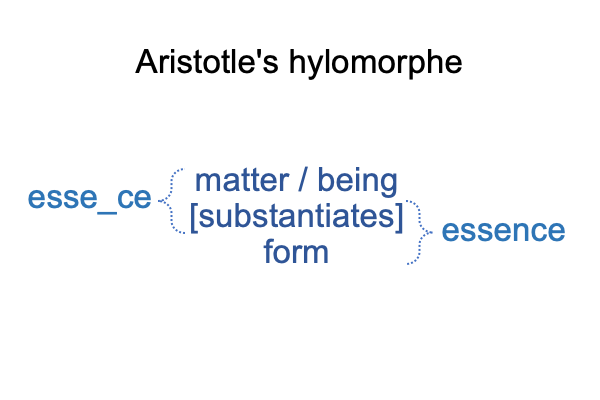
0028 Proposition three instructs me to consider the six days of creation in terms of hylomorphes.
0029 The first three days entail separation. Separation establishes order and function.
0030 For day one, the light and darkness (esse_ce) separate, yielding day and night (essence).
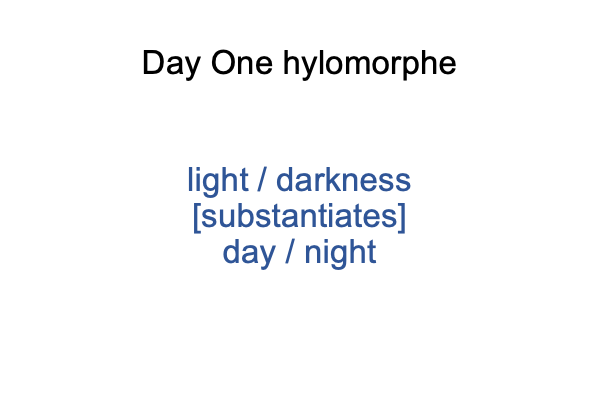
0031 Following the path established in A Primer on the Category-Based Nested Form, this actuality2 calls for a corresponding normal context3 and potential1.
Here is a picture.
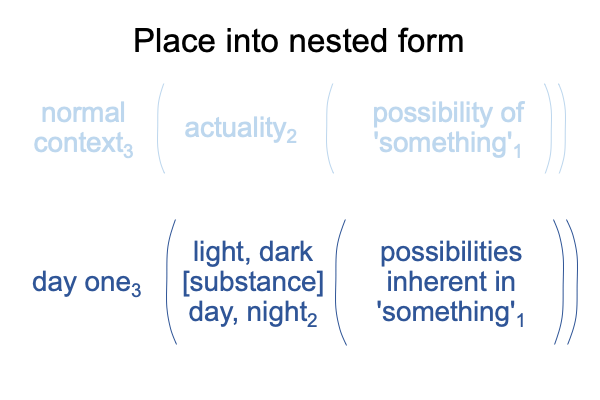
0031 The triadic normal context of day one3 brings the dyadic actuality of light & dark [substantiates] day & night2 into relation with the monadic possibility of ‘something’1.
According to Walton, ‘something’1 is the role and function of time.
0032 The second day portrays a second separation. The waters above and the waters below separate, yielding the vault of the heavens, explicitly, and the location of the witness, on the other.
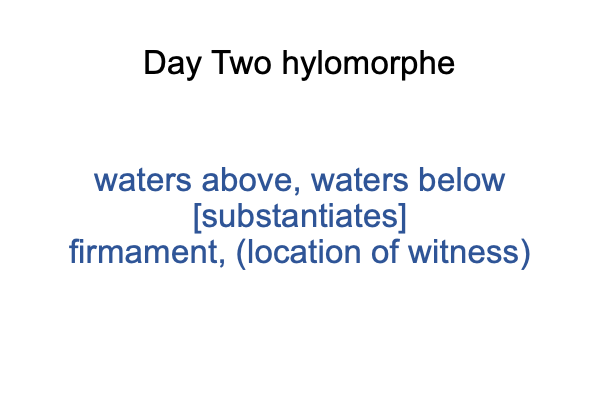
0033 Day Two3 is the normal conext3.
‘Something’1, according to Walton, is a living space for all creatures1.
Other words for ‘something1‘ are here, home and weather.
0034 The third day presents a third separation and a first constitution. The land separates from the seas. The hylomorphe is redundant. Land, sea [substantiate] land, sea.
Then, vegetative life appears.
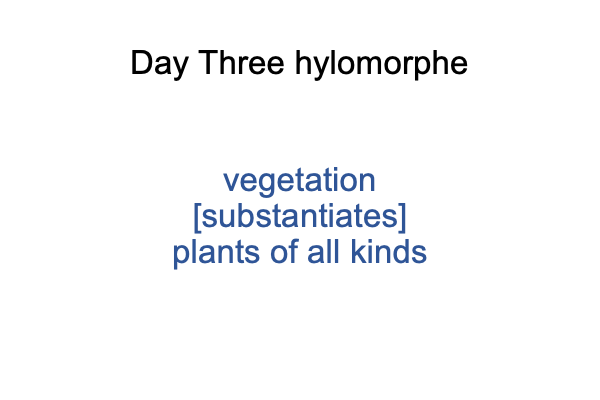
0035 Day three3 is the normal context3.
‘Somelthing’1 includes all types of plants, especially familiar ones, as fondly described in detail in the Genesis text. Plants are food.
0036 Walton concludes that days one, two and three identify major features of human experience: time, weather and food.
Days four through six describe what happens next.
0037 In day four, God places luminaries in the heavens.
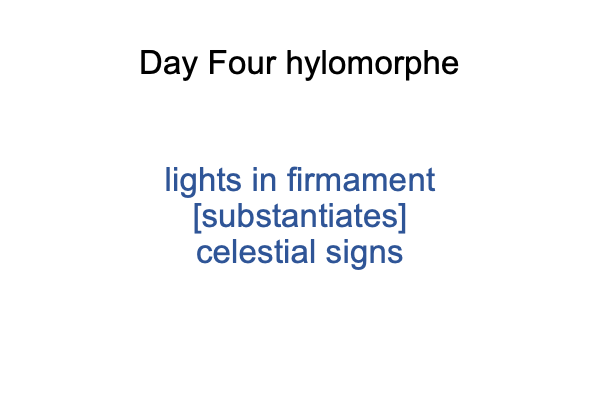
0038 In the normal context of day four3, these celestials signs have roles and functions1 that pertain to time (the potential1for day one3).
Day five portrays animal life in the sea and expands from there.

0039 In the normal context of day five3, aquatic life is available for food1. It is not life that humans can sympathize with. Fish are very different from humans.
0040 Land animal life appears in day six.

Indeed, humans are created towards the end day six.
No creature is more familiar to humans than humans.
0041 Surely, the Creation Story does not detail the phenomena of creation (that is, the stuff that science is interested in).
Rather, the Creation Story portrays the noumena of creation (and that is very curious, because it reads like an evolutionary scenario).
